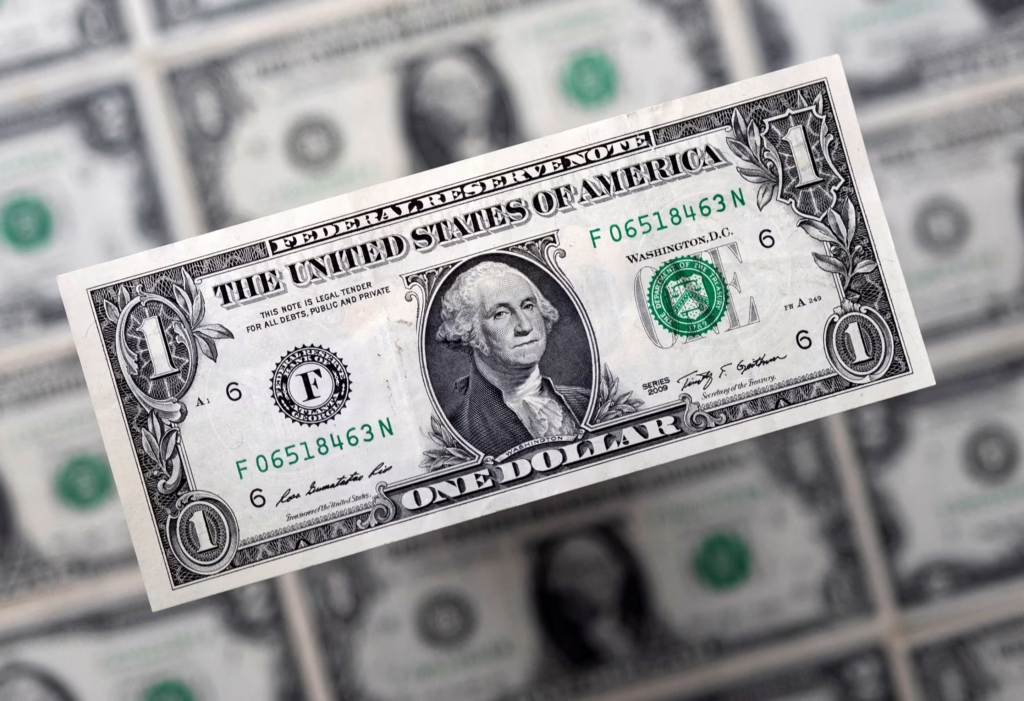
The US dollar has surged against global currencies due to trade policy shifts, monetary policy divergence, and macroeconomic factors. This blog explores key drivers such as tariffs, Federal Reserve rate expectations, oil prices, and market risk sentiment. It also examines currency market impacts and whether the dollar’s strength will persist in the coming months.
Trade Policy Shocks Boosting the Dollar
Tariffs on Major Trading Partners
The Trump administration’s aggressive trade stance has led to sharp gains for the USD. The imposition of 25% tariffs on imports from Mexico and Canada (with 10% on energy) and 10% tariffs on Chinese goods triggered an immediate rally in the dollar’s value.
EU Tariff Uncertainty
President Trump’s warnings of impending tariffs on European Union (EU) imports led to a 1.36% drop in EUR/USD, pushing it toward multi-year lows.
Muted Retaliation Strengthens USD’s Safe-Haven Appeal
Despite retaliatory measures from Canada and Mexico, including counter-tariffs on over $100 billion worth of US goods, the markets continue to favor the US dollar as the primary safe-haven currency.
Monetary Policy: Fed vs. Global Central Banks
US Federal Reserve’s Rate Cut Expectations
Markets have adjusted expectations, now pricing in only 72 basis points (bps) of Federal Reserve rate cuts for 2025, significantly lower than the 125bps initially forecasted by UBS. This makes US assets more attractive to investors.
ECB’s Dovish Stance vs. Fed’s Yield Advantage
The European Central Bank (ECB) is expected to implement 146bps worth of rate cuts in 2025, compared to the Fed’s forecasted 125bps. This divergence enhances the USD’s yield appeal.
Bank of Japan (BoJ) Intervention Concerns
The ongoing strength of the USD against the Japanese yen (USD/JPY) has raised speculation of potential BoJ intervention, further underscoring the dollar’s dominance.
Macroeconomic Factors Driving USD Strength
Rising Oil Prices Support the Dollar
With Brent crude prices nearing $100 per barrel, the dollar benefits from its anti-cyclical properties and the reduced need for US energy imports.
Risk-Off Sentiment in Markets
Trade wars and global economic uncertainty have driven investors toward safe-haven assets. The USD Index has surged from 106.17 in December 2024 to 109.95 as of February 2025.
US Economic Resilience
Stronger-than-expected economic data is also supporting the dollar. In November 2024, the US added 256,000 jobs, surpassing the expected 160,000, reinforcing the “higher-for-longer” interest rate outlook.
Currency Market Impacts
Major Currency Movements (As of February 3, 2025)
| Currency Pair | Movement | Key Level |
|---|---|---|
| EUR/USD | -1.36% | 1.0230 |
| USD/JPY | +1.8% | 149.50 |
| AUD/USD | -1.85% | 0.6240 |
Emerging Market Currencies Under Pressure
- The Indian rupee has weakened beyond ₹87/USD due to $4.2 billion in foreign institutional investor (FII) outflows in January 2025.
- The Chinese yuan continues to struggle as BRICS’ attempts to establish a dollar-alternative currency stall.
Will the Dollar’s Strength Persist?
While some analysts argue that the current rally in the USD may be overextended, market sentiment remains in favor of continued dollar strength in the near term. Much will depend on the Federal Reserve’s policy moves and any further escalation in global trade tensions.
For investors and businesses, keeping a close eye on these developments is crucial as the USD’s trajectory will impact global trade, inflation, and financial markets in the months ahead.